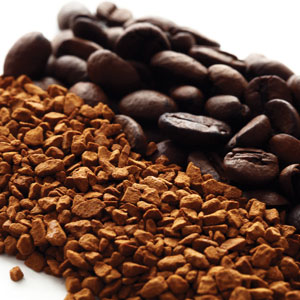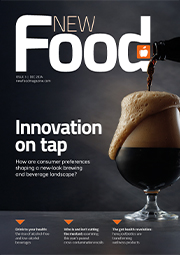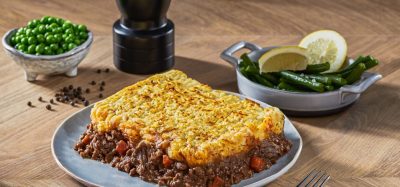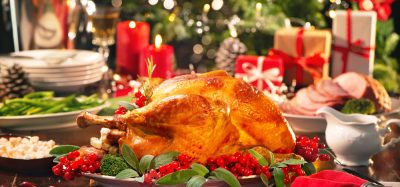Lyophilisation: Atmospheric food freeze-drying: challenges and opportunities
- Like
- Digg
- Del
- Tumblr
- VKontakte
- Buffer
- Love This
- Odnoklassniki
- Meneame
- Blogger
- Amazon
- Yahoo Mail
- Gmail
- AOL
- Newsvine
- HackerNews
- Evernote
- MySpace
- Mail.ru
- Viadeo
- Line
- Comments
- Yummly
- SMS
- Viber
- Telegram
- Subscribe
- Skype
- Facebook Messenger
- Kakao
- LiveJournal
- Yammer
- Edgar
- Fintel
- Mix
- Instapaper
- Copy Link
Posted: 2 January 2014 | Davide Fissore, Mauricio M. Coletto and Antonello A. Barresi, Department of Applied Science and Technology, Politecnico di Torino | 1 comment
Freeze-drying is a process that can be used to remove water from foodstuff, thus increasing their shelf-life, avoiding deterioration of aroma and flavour compounds as well as nutrient degradation. In a vacuum freeze-drying process, product temperature is firstly decreased in such a way that all the free water freezes, then the product is exposed to low pressure and the ice sublimates (primary drying). At the end of the sublimation stage, the amount of residual water can be further decreased by removing the bound water (secondary drying); this stage is generally carried out increasing product temperature and decreasing the operating pressure. This way, all the characteristics of the product, e.g. shape, appearance, colour, taste and texture, are retained in the final product. Moreover, the high specific surface area of the final product allows a fast and easy rehydration.The main drawback of a freeze-drying process is the cost: in particular, the energy required by the process is higher with respect to that of other drying processes. Claussen et al.1 reported a value of specific moisture extraction rate of 0.4 kilograms of water per kWh in a vacuum freeze-drying process.


In 1959, Meryman2 evidenced that the water flux from the ice front to the drying chamber depends on the pressure gradient in the dried product, and not on the absolute pressure of the system. As a consequence, it can be possible to carry out the drying process at atmospheric pressure if a water vapour pressure gradient is maintained in the dried product.
In an atmospheric freeze-drying process, the product to be dried is firstly frozen (at about -10°C) and then it is dried with air at temperatures generally ranging from -10 to -3°C, as this appears to be a good compromise between costs and final product quality. In this case, the specific moisture extraction rate can range from 1.5 to 4.6 kilograms of water per kWh1, and 35 per cent of energy savings can be achieved with respect to vacuum freeze-drying, as reported by Wolff and Gibert3 for drying potato slices. Besides, almost the same product quality with respect to vacuum freeze-drying is obtained, as shown for many products like strawberries and potatoes, fish products, lactic acid bacteria and many others.
The atmospheric freeze-drying process can be carried out in a tunnel dryer4. The product is placed over a belt or a shelf and dry air flows over the product to remove the water. Air temperature, relative humidity and velocity can play a relevant role on drying time. Figures 1A and 1B show the effect of the various operating parameters on drying time of apple samples (Malus domestica) in a tunnel dryer. It appears that the drying time is significantly reduced when decreasing air relative humidity or increasing air temperature, while the effect of air velocity is poor. This is due to the fact that in a tunnel freeze-dryer, the velocity of heat and mass transfer is not very high and thus the sublimation flux can be increased mainly acting on the driving force of the sublimation process (i.e. on the difference between water vapour partial pressure at the ice front, dependent on product temperature and in the chamber, dependent on relative humidity).
As an alternative, the product can be freeze-dried in a fluidised bed (Wolff and Gibert3), a type of device where a fluid is passed through a granular solid material at a sufficiently high velocity to suspend the solid, and cause it to behave as it were a fluid. When using a fluidised bed it is necessary to granulate the frozen product before drying. Size reduction caused by mechanical cracking is a potential drawback, while the main advantages are represented by the high velocity of heat and mass transfer processes that can be obtained. In Figures 1C and 1D, the drying time calculated for the atmospheric freeze-drying of apple samples (Malus domestica) in a fluidised bed are compared to those obtained in a tunnel freeze-dryer, evidencing that the drying time can be significantly reduced in the first type of equipment.
The rest of this article is restricted - login or subscribe free to access


Why subscribe? Join our growing community of thousands of industry professionals and gain access to:
- bi-monthly issues in print and/or digital format
- case studies, whitepapers, webinars and industry-leading content
- breaking news and features
- our extensive online archive of thousands of articles and years of past issues
- ...And it's all free!
Click here to Subscribe today Login here








I need pdf atmospheric freeze drying